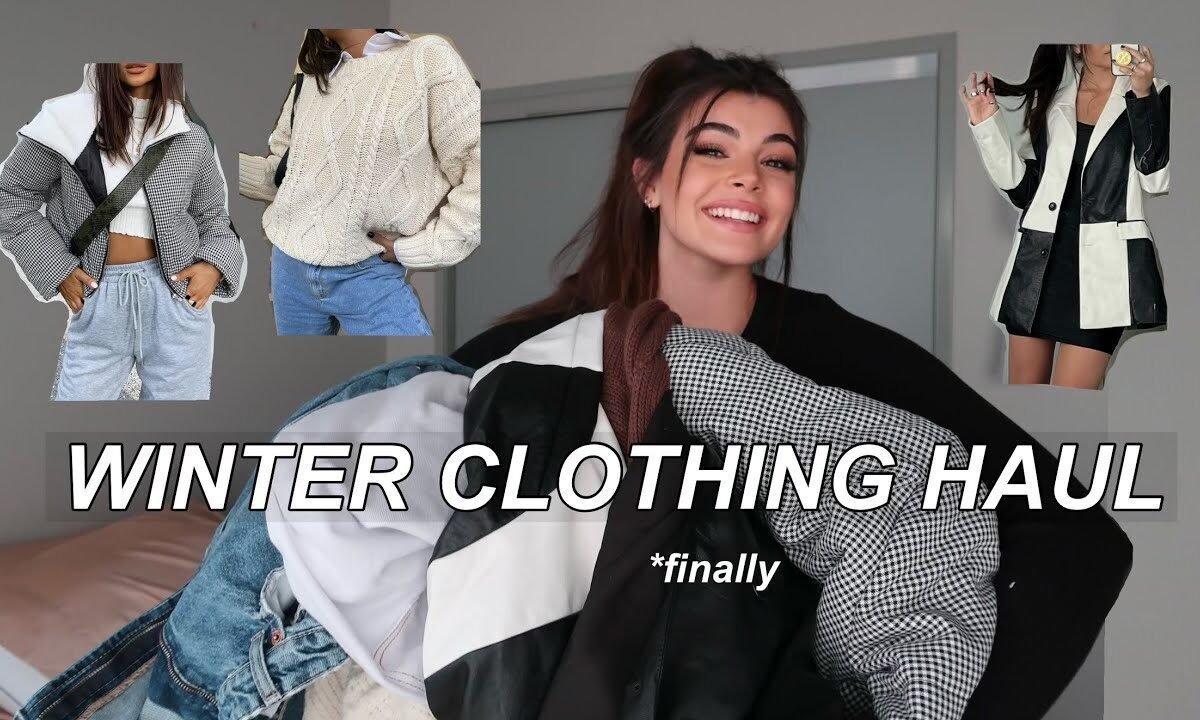Clothing Hauls Has Become A Worlds Obsession
The thumbnails of stunned people surrounded by shopping bags are all over YouTube. Simply said, a haul is a film in which an influencer displays the numerous purchases they made in a brief period of time. Creators are using TikTok to share their purchases in hauls, which are hugely popular and continue to grow.

Before shelling out cash and placing an order, viewers may frequently find reviews of products they are thinking about purchasing on YouTube. It’s challenging to judge an item’s quality from its manipulated photographs given the rise in online buying from dubious websites like AliExpress and even standard quick fashion shops like BooHoo.
Influencers have the power to tell their audience whether or not a company is worth their hard-earned money, thereby saving them both time and money.
With haul films, the arrangement is equally as crucial as the material showcased. They are frequently designed to make you feel as though you are sitting next to a buddy while they browse and ask for your approval on their purchases. This is similar to ASMR in that it creates the illusion of social engagement during times of solitude.

Clothing Hauls are also a terrific method to inform viewers about the latest products and fashions and to encourage them to venture outside of their comfort zones and try new things. The films might be useful for those who are having a hard time figuring out their personal style, such as younger viewers who are just getting into fashion. The films provide a road map that individuals in real life might not be able to provide, and influencers with varied body types can also provide input on what clothes best highlights their characteristics and share what they’ve learned with their viewers.
The route, however, could be more like a high street that is out of reach, expensive, and occasionally even dubious than a yellow brick road.More stringent restrictions have resolved one of the main problems with haul footage. Influencers are required by these regulations to disclose whether they have received gifts or have been compensated for their endorsements. Before the regulations were passed, influencers frequently received payment to promote products to their audiences while keeping their relationship with sponsors a secret. Today, the same thing still occurs, but the influencer will disclose in the video that they were paid to promote the good – the product still has positive ratings, and people are still urged to buy it.
In exchange for positive evaluations, whether they are genuine or not, numerous firms regularly use these advertisements to promote their products. Influencers gladly comply, receiving new products in exchange for deceiving or, at best, tricking their audience. Fans are more likely to adopt an idea when an influencer endorses a certain trend or product. Supporters will participate because they are rooting for a person they like and secretly or intentionally desire to emulate. These collaborations between influencers and brands profit greatly from the followers’ belief that influencers will speak the truth.

Audiences are exposed to thousands of pounds worth of items every day because of the sheer amount of fashion merchants and beauty companies that are currently available, as well as the volume of haul footage that is constantly broadcast. The typical Clothing Hauls video can include anywhere from £200 to £2000 worth of goods, and that’s without taking into account the “luxury hauls,” which can exceed five figures.
Influencers, who make far more money than the typical person watching them, are portrayed as having “normal” buying patterns, and this behavior is even encouraged. The online spending habits of influencers only make a little hole in their bank accounts, but to viewers, the same sum of money might be practically life-changing.
Also, see
Poco X5 5G Launched In India At A Price Of Rs 18,999
Follow us on Koo App – here
